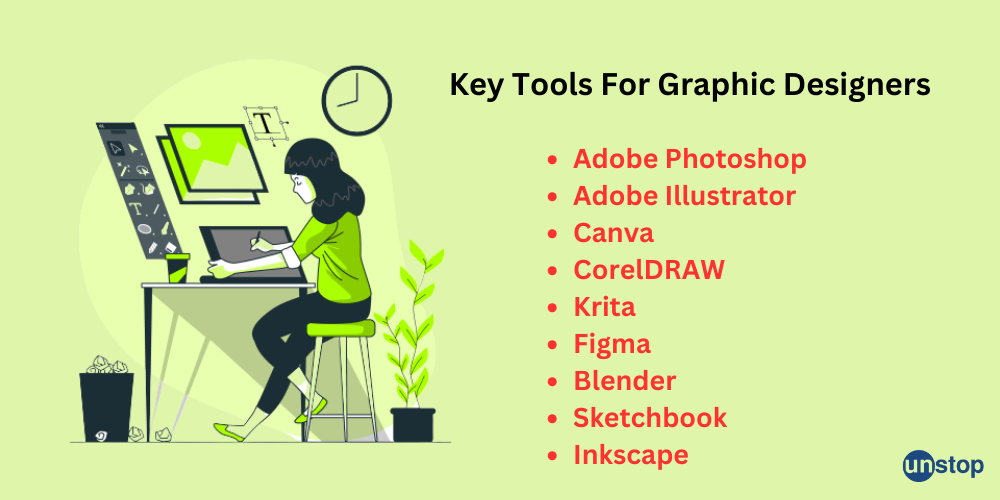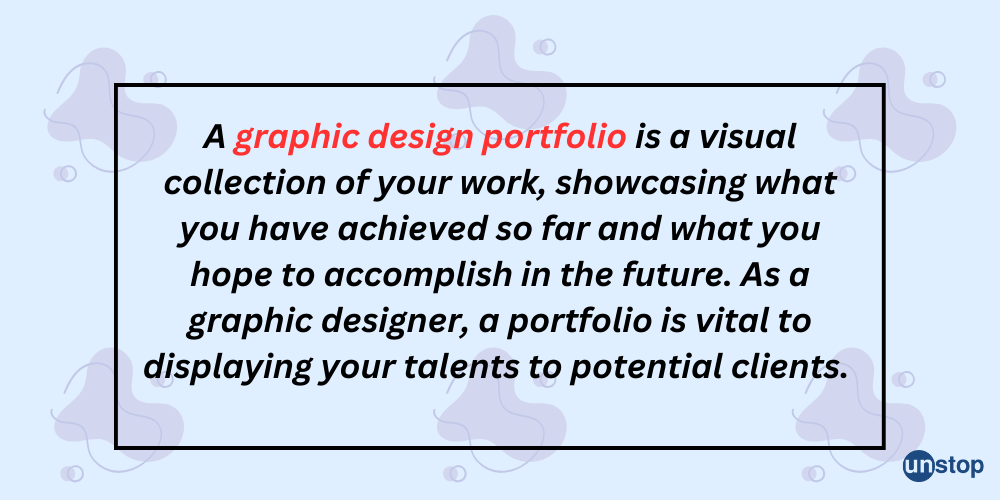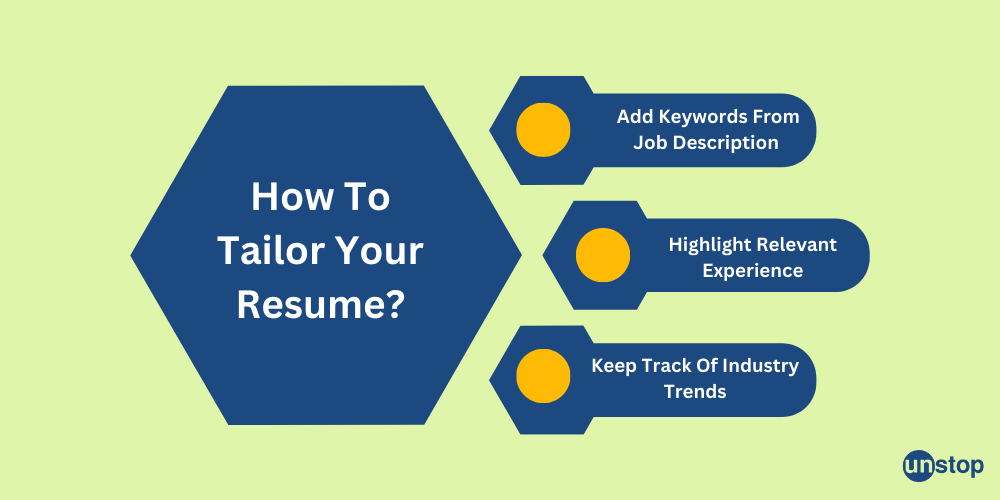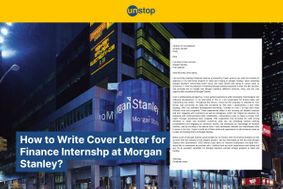- Qualification and Skills to be An Accountant
- Entry-Level Accountant Resume Format | Functional Resume
- Experienced Accountant Resume | Chronological Format
- Senior Accountant Resume (Combination Format)
- How to Write an Effective Accounting Resume
- Frequently Asked Questions (FAQs) on Accountant Resume
- Digital Marketing Resume Format
- Digital Marketing Resume Samples
- Frequently Asked Questions - Digital Marketing
- Business Analyst Resume Template
- Business Analyst Resume: Points To Remember
- Business Analyst Resume Samples
- Frequently Asked Questions
- Top 10 front-end developer resume tips
- Front-end Developer Resume Samples
- Importance of an Effective Data Scientist Resume
- Key Elements of a Data Scientist Resume
- Work Experience Section For Data Scientist Resume
- Importance fo Highlighting Relevant Certifications
- Showcasing Technical Skills and Projects
- Creating a Successful Data Scientist Resume
- Data Scientist Resume Samples
- Conclusion: Writing An Effective Data Scientist Resume
- FAQs
- Must-Have Skills For A Graphic Designer Resume
- Graphic Design Resume: Points To Note
- Structuring Your Resume
- Tailoring Your Graphic Designer CV
- Graphic Designer Resume Samples
- Key Takeaways for Creating an Effective Graphic Designer Resume
- Frequently Asked Questions
- How to Write a Resume for Product Manager: Points To Remember
- 5 Product Manager Resume Samples
- Key Skills for a Java Developer Resume
- Including Relevant Education and Certifications in a Java Developer Resume
- Optimizing Your Java Developer Resume for ATS
- Action Words for an Impressive Java Developer Resume
- Formats for Java Developer Resume
- Examples of Java Developer Resumes
- Frequently Asked Questions about Java Developer Resumes
- Resume for software engineering: Template
- Resume for software engineering: Important Points
- How to write the best resume for a software engineer job?
- Software Engineer Resume Samples
- Key Takeaways
- Data Analyst Resume: What to Include
- Resume Format For Experienced and Entry-Level Data Analysts
- Data Analyst Resume Sample
- Tips for Writing a Data Analyst Resume
Graphic Designer Resume 2025: Top Skills & Awesome Resume Samples

Are you a job seeker looking to create an eye-catching graphic designer resume and cover letter that will make you stand out from the competition? Make sure your job application stands out by crafting an impressive resume and cover letter. Well, you've come to the right place! Crafting a well-designed and impactful resume is crucial for creative graphic designers in today's competitive job market. Resumes are the first impression that a recruiter has of you, so it's important to make them stand out. Additionally, including a cover letter can further showcase your skills and qualifications to potential employers.
So, whether you're a seasoned senior graphic designer or just starting out in the field, this article will provide you with valuable insights on how to create an impressive graphic designer resume that captures the attention of potential employers. Ready to dive in? Let's get started!
Must-Have Skills For A Graphic Designer Resume
Technical Skills
Proficiency in the Adobe Creative Suite, including Photoshop, Illustrator, and Figma, is crucial for any graphic designer resume. To demonstrate your expertise, you can provide examples of how you have utilized the Adobe Creative Suite in your previous projects. By doing so, you can effectively convey your ability to use these software programs and increase your chances of landing the job.

Creativity and Artistic Abilities
Graphic design is all about creativity and artistic flair. When crafting your graphic designer resume, you must showcase your ability to generate innovative ideas and translate them into visually appealing designs. This will impress potential employers who are looking for examples of your creativity and skills.
A pro tip is to include specific projects or accomplishments that highlight your talent in bringing ideas to life through your designs. Showcase your creativity as a graphic designer by including a portfolio or samples of your work in your graphic designer resume. This will highlight your unique style and approach as a senior graphic design specialist.
Strong Communication and Collaboration Skills
Being a graphic designer is more than just creating beautiful visuals; it also involves working closely with clients, team members, and other stakeholders in the job. Thus, effective communication skills are vital in the web design job, as they are essential for understanding client requirements, interpreting feedback, and collaborating with others throughout the design process.
Thus, it is important to highlight instances in your resume where you've successfully worked in teams or managed client relationships in your job as a graphic designer. This will be valuable information to include in your resume.
Relevant Experience: Putting Theory into Practice
While technical skills are essential, real-world experience is equally valuable on a graphic designer resume. Include any relevant work experience or internships in your graphic designer resume where you had the opportunity to apply your design skills in practical settings. This demonstrates that you can handle real projects and meet clients' expectations as a graphic designer.
Certifications and Additional Training
To stand out from other applicants, consider obtaining certifications or additional training in specific areas of graphic design to enhance your resume. These graphic design resume credentials show employers that you are committed to expanding your skill set and staying up-to-date with industry trends.
By showcasing your technical abilities, creative mindset, strong communication skills, relevant experience, and commitment to professional development, you'll create a graphic designer resume that stands out from the competition.
Graphic Design Resume: Points To Note
Including an online portfolio section in your graphic design resume is crucial for showcasing your work effectively. A well-crafted resume showcases your skills and creativity, giving you a competitive edge in the job market. Potential employers can see firsthand what you bring to the table.
Selecting the Best Platform for Your Online Portfolio
There are a few popular options to consider. Behance and Dribbble are two widely used platforms for designers and artists to showcase their work and enhance their resume. These platforms provide a user-friendly interface for showcasing your projects and gaining exposure within the design community.

Organizing and Presenting Your Portfolio Effectively
To impress potential employers with your resume, it's essential to organize and present it in a visually appealing and easy-to-navigate manner. Consider these tips:
-
Create Resume Sections: Divide your portfolio into resume sections, such as Web Design, Print Design, Illustration, etc., to showcase different projects separately.
-
Highlight Key Information on Your Resume: Include relevant details about each project, such as client briefs, objectives achieved, and any notable results or awards received.
-
Include Contact Information in Your Resume: Ensure your resume's contact information section is easily accessible so employers can contact you if interested.
-
Provide Direct Links to Websites or Live Projects: Provide website links or live projects on your resume whenever possible so that potential employers can interact with your work directly.
Structuring Your Resume
It is crucial to structure your resume in a way that effectively highlights your skills and experiences. Here's a step-by-step guide on how to structure your resume:
-
Contact Information:
-
Include your full name, phone number, email address, and professional website or portfolio link in your resume.
-
Ensure that your resume's contact information is prominently displayed at the top of the page.
-
-
Summary Statement:
-
Write a concise summary statement for your resume that captures your key qualifications and career goals.
-
Use powerful action verbs and relevant keywords in your graphic design resume.
-
-
Experience:
-
List your professional experience in reverse chronological order.
-
When creating your resume, it is important to include relevant information such as job titles, company names, dates of employment, and bullet points highlighting your accomplishments and responsibilities.
-
-
Education:
-
When creating your resume, be sure to mention your educational background, specifically any degrees or certifications you have earned that are relevant to graphic design.
-
When creating your resume, make sure to include the name of the institution you attended, along with the graduation date. It's also important to mention any honors or awards you received during your time at the institution.
-
-
Skills:
-
Highlight your technical skills on your resume, such as proficiency in design software (e.g., Adobe Creative Suite) and knowledge of typography principles.
-
Also include soft skills like communication, teamwork, problem-solving abilities, etc.
-
-
Projects/Portfolio:
-
Showcase your best design work on your resume by including a section for projects or linking to an online portfolio.
-
See and Learn: You can check out the interesting portfolios of some popular graphic designers like Aries Moross, The Dutchman, Gary Shear, Naomi Umezu to name a few.
-
Optional Sections:
-
Consider adding sections like volunteer work or relevant coursework to your resume if they enhance your candidacy.
-
Tailoring Your Graphic Designer CV

To increase the chances of landing an interview, tailor your graphic designer CV to specific job postings and industry trends:
-
Review job descriptions carefully: Identify keywords used by employers in their requirements and incorporate them into your resume.
-
Highlight relevant experience on your resume: Emphasize design projects or professional experience that aligns with the specific job you're applying for.
-
Stay up-to-date: Keep track of industry trends and incorporate them into your resume to showcase your adaptability and knowledge.
Graphic Designer Resume Samples
Sample 1: Entry-Level Graphic Designer Resume
[Your Name]
[Address] [City, State ZIP Code] [Email Address] [Phone Number] [LinkedIn Profile]
Resume Objective:
Detail-oriented and creative graphic designer with a strong foundation in design principles and software proficiency, seeking to enhance my resume. Seeking an entry-level graphic designer position to apply my skills and develop my career in a dynamic design studio.
Education:
Bachelor of Fine Arts in Graphic Design from [University Name] in [City, State]. Graduated in [Year of Graduation]. Resume.
Skills:
Adobe Creative Suite (Photoshop, Illustrator, InDesign)
Typography
Layout Design
Color Theory
Branding and Identity
Communication Skills
Problem-Solving
Attention to Detail
Projects:
Created promotional materials for university events, including posters, brochures, and resume.
Designed logos and branding materials for local small businesses.
Assisted in the production of marketing materials for a nonprofit organization, including creating and updating the resume.
Internships:
Graphic Design Intern at [Company Name] in [City, State] during [Dates of Internship]. Resume.
Collaborated with senior designers on client projects.
Assisted in the creation of social media graphics and marketing materials for the resume.
Gained hands-on experience with client consultations.
Sample 2: Mid-Level Graphic Designer Resume
[Your Name]
[Address] [City, State ZIP Code] [Email Address] [Phone Number] [LinkedIn Profile]
Resume Summary:
Experienced graphic designer with over 5 years of proven expertise in delivering creative solutions for a diverse range of clients. Adept at concept development, project management, and team collaboration. Seeking new challenges in a design role that allows for continued growth and innovation. I am eager to showcase my skills and experience on my resume.
Professional Experience:
Graphic Designer Resume [Company Name] [City, State] [Dates of Employment]
Led a team of junior designers in executing design projects, ensuring brand consistency. As a result, I created a strong resume showcasing my leadership skills.
Designed marketing collateral, including brochures, posters, and digital advertisements.
Managed multiple projects simultaneously, meeting resume deadlines and exceeding client expectations.
Collaborated with clients to understand their vision and provide design solutions that met their goals. Updated their resume to reflect their achievements and skills.
Senior Graphic Designer Resume [Company Name] [City, State] [Dates of Employment]
Conceptualized and executed creative concepts for branding, marketing campaigns, and resume.
Redesigned the company's website, resulting in a 30% increase in user engagement. This improvement is a great addition to your resume.
Mentored junior designers, providing guidance and training in design principles, software, and resume.
Skills:
Adobe Creative Cloud (Photoshop, Illustrator, InDesign)
UI/UX Design
Print and Digital Design
Project Management
Branding and Identity
Art Direction
Client Communication
Education:
Bachelor of Arts in Graphic Design [University Name] [City, State] [Year of Graduation]
Certification Courses (if any)
Live Projects
Sample 3: Senior Graphic Designer Resume
[Your Name]
[Address] [City, State ZIP Code] [Email Address] [Phone Number] [LinkedIn Profile]
Resume Objective:
Highly accomplished and innovative senior graphic designer with a track record of delivering exceptional design solutions for global brands. Experienced in leading design teams, managing complex projects, and establishing brand identities. Seeking a challenging leadership role in a forward-thinking design agency.
Professional Experience:
Senior Graphic Designer [Company Name] [City, State] [Dates of Employment]
Led a team of 8 designers in executing design strategies for international clients.
Spearheaded the redesign of major clients' branding and marketing materials, resulting in a 20% increase in revenue.
Collaborated with the marketing department to develop and implement design-driven campaigns.
Developed and maintained brand guidelines to ensure consistency across all design projects.
Creative Director [Company Name] [City, State] [Dates of Employment]
Oversaw the creative direction of the company, managing a team of designers and copywriters.
Successfully pitched and won high-profile client accounts, expanding the company's portfolio.
Implemented design processes and workflows to increase efficiency and quality of deliverables.
Mentored and trained junior designers to foster growth within the team.
Skills:
Adobe Creative Cloud (Photoshop, Illustrator, InDesign)
Brand Strategy
Team Leadership
Project Management
Art Direction
Digital Marketing
Print and Digital Design
Client Relationship Management
Education:
Bachelor of Fine Arts in Graphic Design [University Name] [City, State] [Year of Graduation]
Certification Courses (if any)
Live Projects
These sample resumes cover a range of experience levels, from entry-level to senior graphic designer positions. You can tailor your own resume to your specific skills, experiences, and career goals.
Key Takeaways for Creating an Effective Graphic Designer Resume
A strong graphic designer resume can catch the attention of prospective employers and increase your chances of landing a job as an art director. It enables you to highlight your expertise, experience, and accomplishments effectively. Also, utilizing simple yet professional graphic design resume templates can further enhance the look and appeal of your resume.
We hope you have gained valuable insights into crafting an impressive graphic designer resume by now. Remember, your resume is your ticket to showcasing your skills and standing out from the competition. So, highlight your must-have skills, experience, and qualifications relevant to the graphic design industry.
Now that you have all the necessary tools, it's time to put them into action! Start by tailoring your resume to each job application and ensuring it reflects your unique style as a graphic designer. Remember, a well-crafted resume can open doors to exciting opportunities in this creative field. Good luck!
Frequently Asked Questions
How do I choose the right format for my graphic designer resume?
When selecting a format for your graphic designer resume, consider the industry norms while also allowing room for creativity. The most common formats are chronological (highlighting work experience), functional (emphasizing skills), or a combination of both.
Should I include references on my graphic designer resume?
Typically, it's not necessary to include references directly on your resume unless specifically requested by the employer. Instead, prepare a separate document with references readily available upon request.
Is it important to tailor my graphic designer resume for each job application?
Absolutely! Tailoring your resume allows you to highlight relevant skills and experiences that align with the specific requirements of each job posting. This customization increases your chances of catching the hiring manager's attention.
Can I use unconventional designs or layouts in my graphic designer resume?
While creativity is essential in the field of graphic design, it's crucial to strike a balance between uniqueness and professionalism when designing your resume. Ensure that readability and clarity are not compromised by overly unconventional layouts.
Should I include a cover letter with my graphic designer resume?
Including a well-crafted cover letter can help you stand out from other applicants and provide additional context to your skills and experiences. It's an opportunity to showcase your communication skills and express your enthusiasm for the position.
Suggested Reads:
As a biotechnologist-turned-writer, I love turning complex ideas into meaningful stories that inform and inspire. Outside of writing, I enjoy cooking, reading, and travelling, each giving me fresh perspectives and inspiration for my work.
Login to continue reading
And access exclusive content, personalized recommendations, and career-boosting opportunities.
Subscribe
to our newsletter
Blogs you need to hog!

How To Write Finance Cover Letter For Morgan Stanley (+Free Sample!)

55+ Data Structure Interview Questions For 2025 (Detailed Answers)

How To Negotiate Salary With HR: Tips And Insider Advice














Comments
Add comment